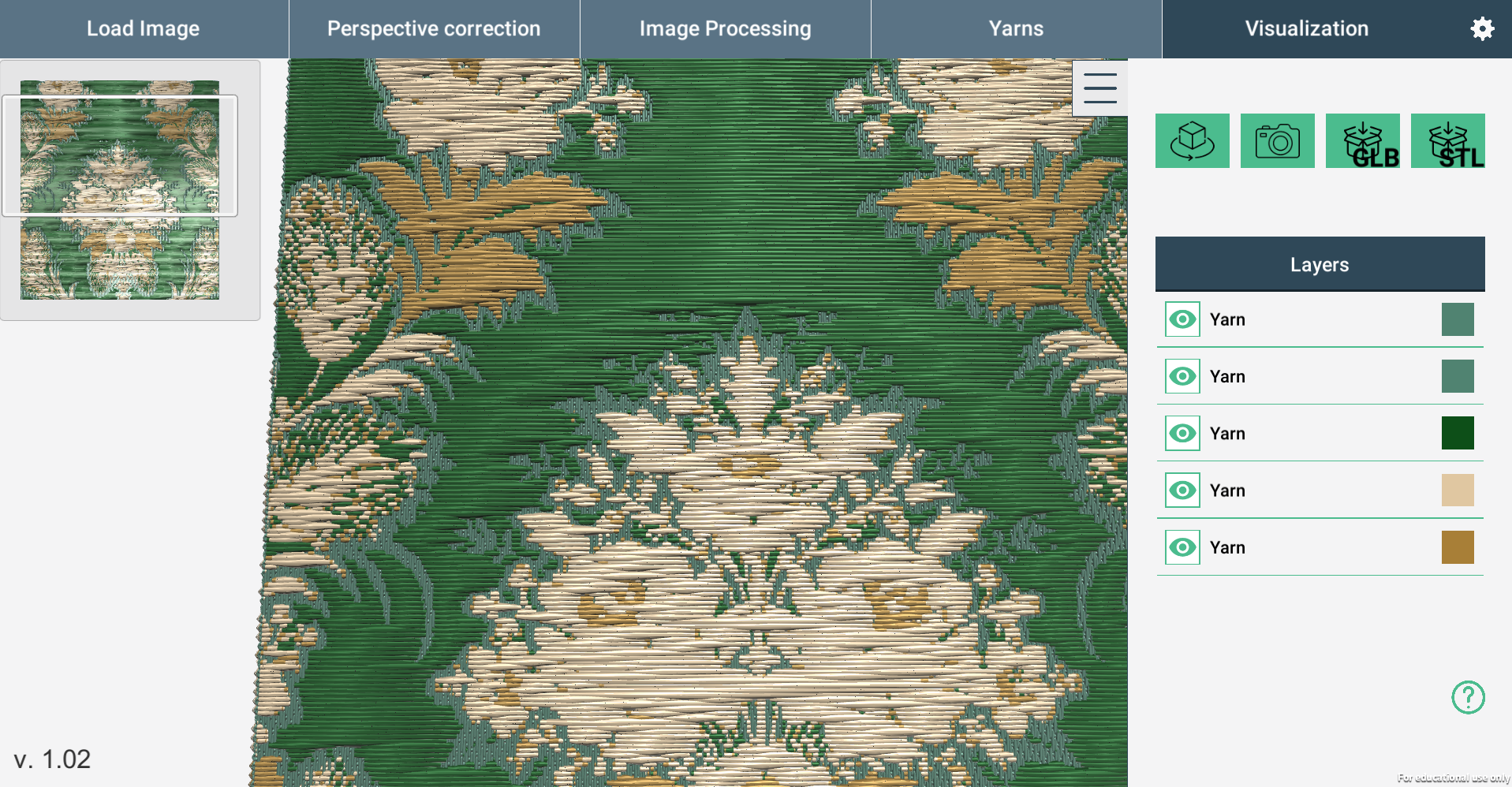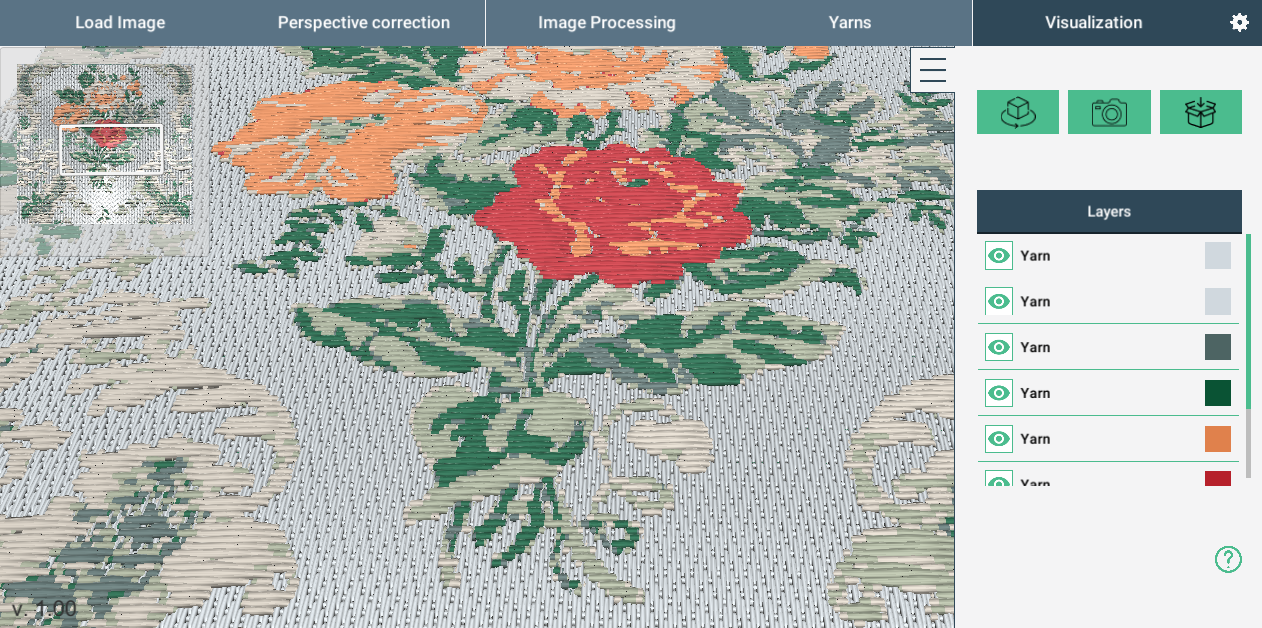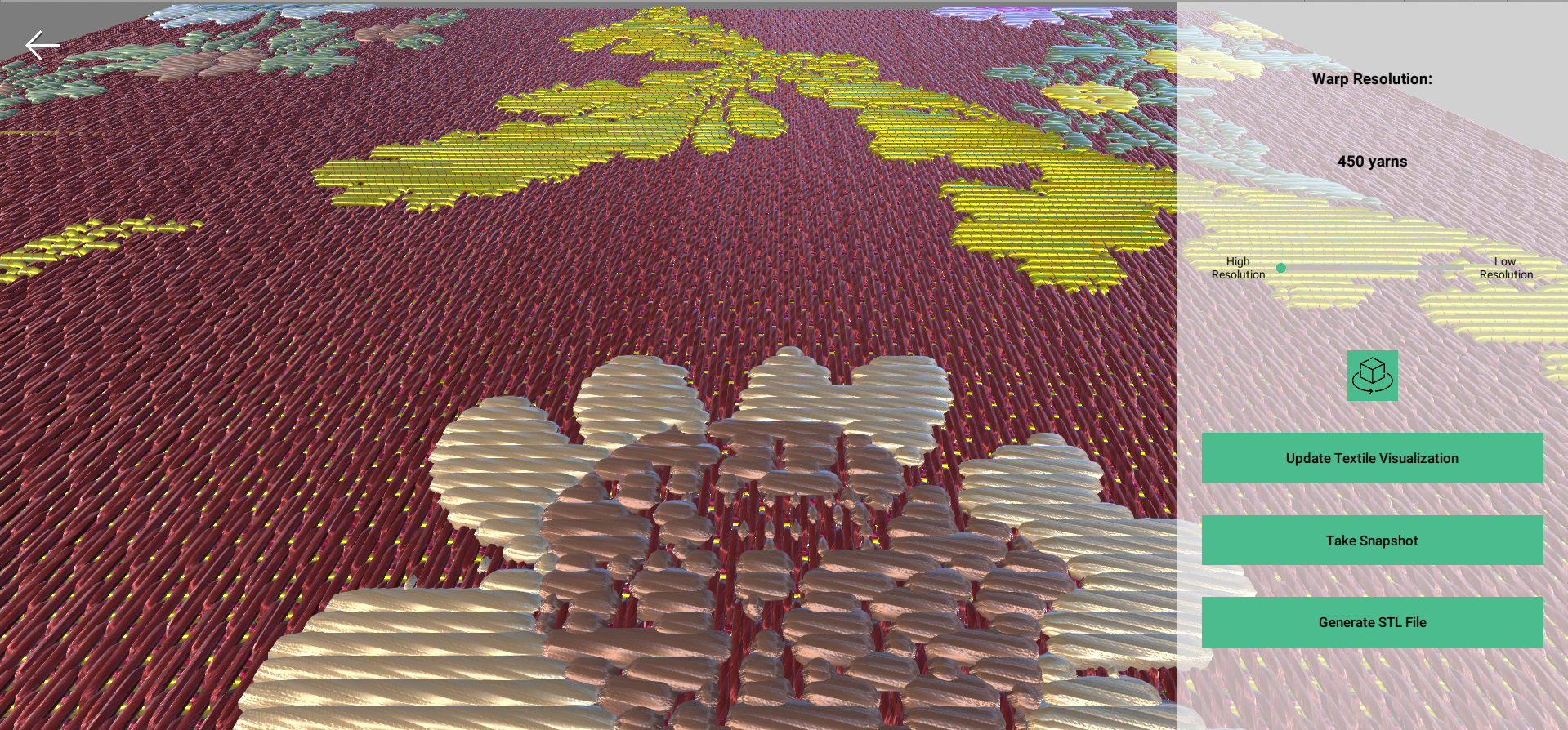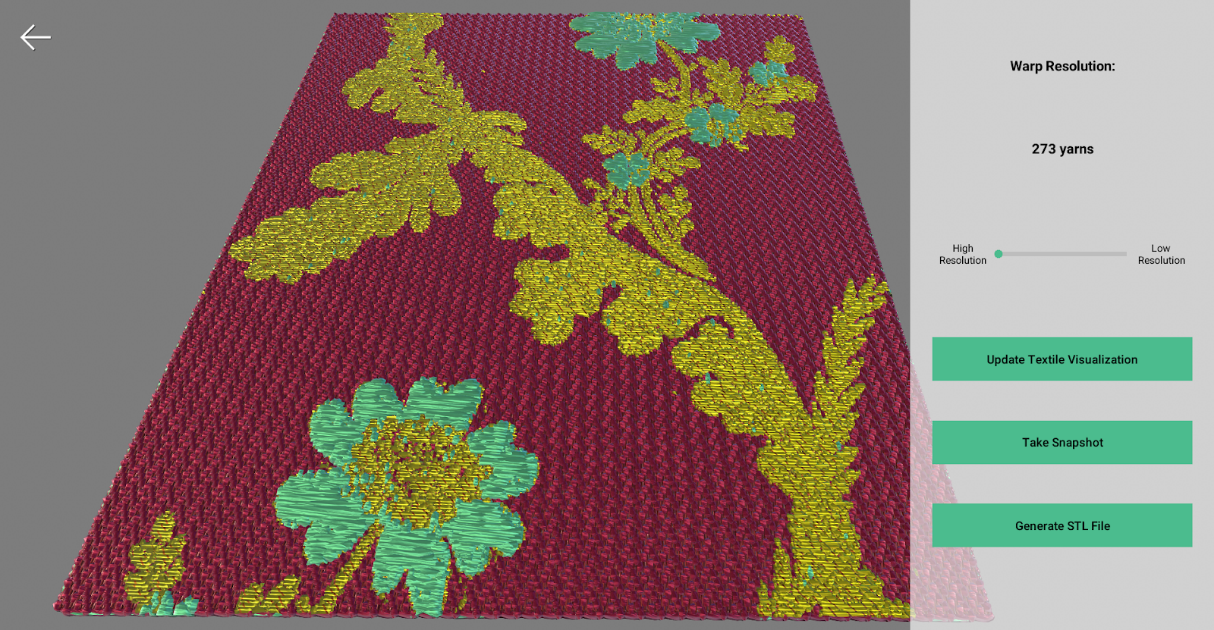Release History
Version 1.02 Released on (31/05/21)
This version has been updated with several improvements and bugs fixed that has been extracted from the users tests. This version can export the 3D model in GLTF and STL format, for visualization or 3D printing. The option to export to SVG allows the user to extract the 2D design of the selected image.

Version 1.00 Released on (02/10/20)
In this version, Virtual Loom has more user help on each creation steps. There is a general view of the fabric in visualization step. Each yarn can be hide in order to inspect the inner structure of the fabric.

Version 0.91b Released on (04/03/20)
This version fixes small errors found in the previous version of the Virtual Loom. The visual aspect of the yarns has changed. This version also adds a button to easily rotate the textile patch.

Version 0.9b Released on (20/12/19)
In this version of the Virtual Loom the GUI has been rebuild in order to make the subtraction of designs and the generation of 3D models easy. It is designed in such a way that it is easy to use, even for a non-expert user, thus making it accessible for the general public, too. This is the first version that allow users to load images from local storage. Image Processing has changed making the process of extraction of the pictorial parts in a more automated way. In this version a total of 6 weaving techniques are available: Damask, Damassé with Metallic Weft, Lampas, Espolín, Espolín with Damassé Ground, Freestyle. Freestyle is a “custom” weaving technique that allows users to create textiles without any restriction. New weaves and yarns have also been added to expand Virtual Loom features. Users can take screenshots of the 3D representation and export these 3D models in STL format to be printed.

Version 0.5a Released on (25/09/19)
This version of the Virtual Loom is composed of four screens. In the first one, some images are loaded. The user has to select one of them in order to proceed. Once selected, the next step involves the selection of an area and its aspect ratio. The image of the left shows the entire textile image and the four interactive points that users can move in order to select an area of interest. The image of the right is the resulting image, that will be further processed in the next step for the background subtraction. The image of the left shows the image with the area of interest. Two interactive points allow users to select the background and the pictorial part. The result of background subtraction is depicted in the right image. Users can also define the type of yarn (three options are implemented: simple, silk and cotton) for both the background and the pictorial part. Additionally, they can choose from a variety of weaves (the basic ones and their variations). The last screen shows the 3D model of the defined area of interest with the yarn options defined by users. It has a slider referred as "level of detail" that allows increasing/decreasing the number of yarns (both weft and warp). As in v0.1a, in this version there is only one weaving technique implemented: damask.

Version 0.1a Released on 19/06/19)
This version is the first put online, and was introduced in the papers [xxx, xxx] and a screen shot is provided in Figure xxx. It consists of a single screen, where only the three basic weaves and five images of textiles can be selected. This version does not involve any image processing for the extraction of the textile's design, as the loaded images are directly the designs themselves. There is only one weaving technique implemented: damask. It has a slider referred as "level of detail" that allows increasing/decreasing the number of yarns (both weft and warp).
